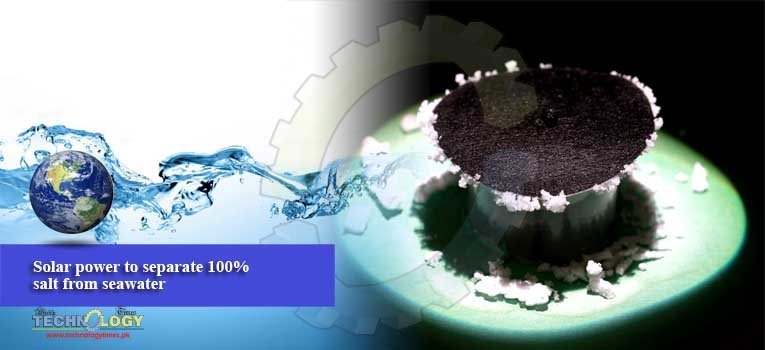A team from Melbourne used a small disc created out of super-hydrophilic filter paper that is layered with carbon nanotubes for absorbing light. The method runs entirely on sunlight, and can remove almost 100% salt from seawater.

The approach is based on a traditional method where the water is heated until it’s turned to steam, which is then captures. It leaves the salt and other impurities behind. Turning water to steam uses solar energy that requires using solar thermal materials for efficiently converting the energy to heat.
However, if these materials are covered by salt crystals from the evaporating water, the whole thing can stop. The new method solves this issue by maintaining a stable rate of water evaporation as the salts are harvested and removed from the process, in order to avoid them reducing efficiency.
Moreover, the system uses a 0.04-inch diameter cotton thread to transport salty water to the evaporation disc, where the pure water is trapped and the salts are pushed out towards the edges.
Researcher Xiwang Zhang told that the new device is able to produce 6-8 liters of clean water per 10.8sq ft. of surface area per day. For future, the team wants to increase that production rate.
“We hope this salt seawater research can be the starting point for further research in energy-passive ways of providing clean and safe water to millions of people, illuminating environmental impact of waste and recovering resource from waste,” said Zhang.